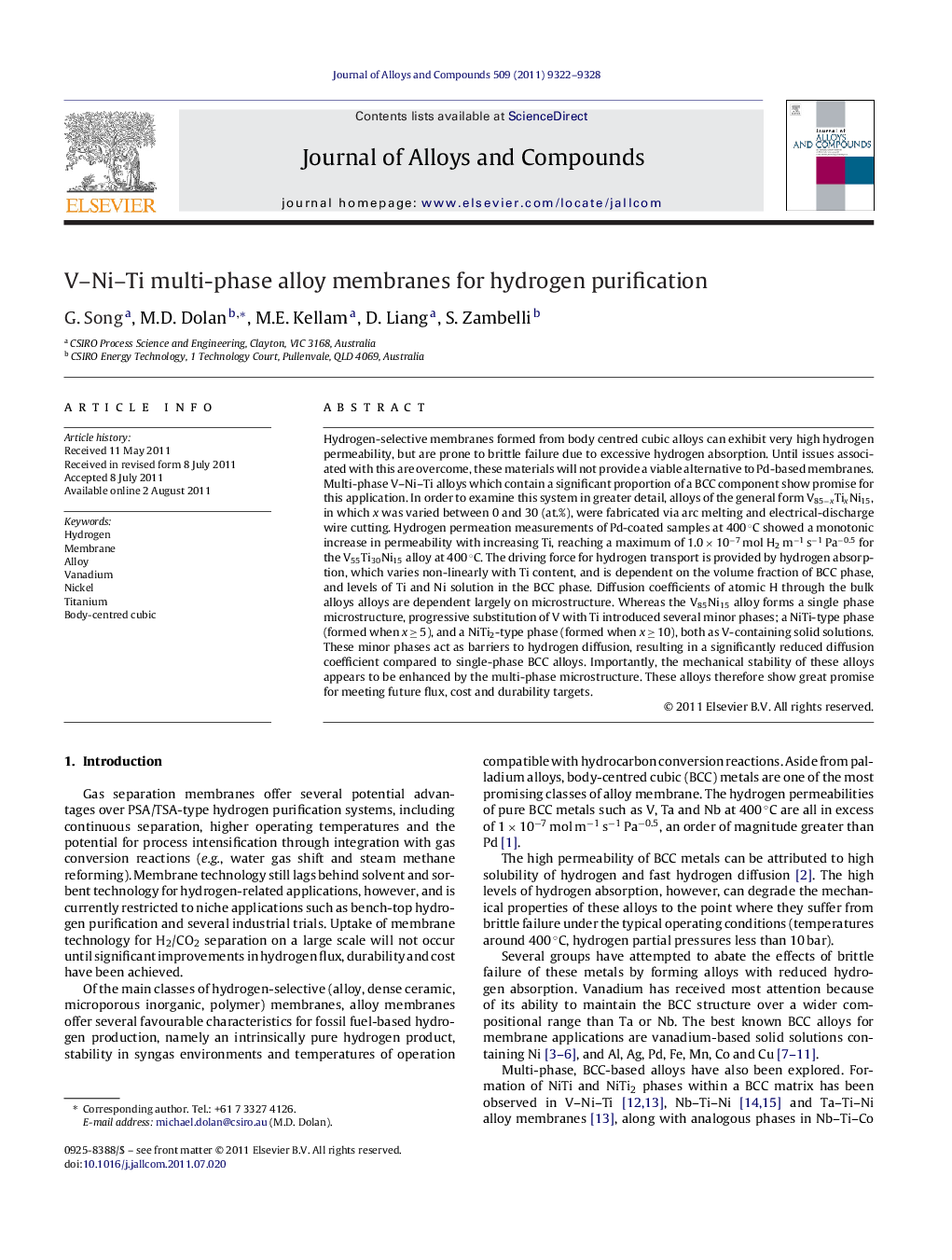| کد مقاله | کد نشریه | سال انتشار | مقاله انگلیسی | نسخه تمام متن |
|---|---|---|---|---|
| 1616750 | 1005668 | 2011 | 7 صفحه PDF | دانلود رایگان |

Hydrogen-selective membranes formed from body centred cubic alloys can exhibit very high hydrogen permeability, but are prone to brittle failure due to excessive hydrogen absorption. Until issues associated with this are overcome, these materials will not provide a viable alternative to Pd-based membranes. Multi-phase V–Ni–Ti alloys which contain a significant proportion of a BCC component show promise for this application. In order to examine this system in greater detail, alloys of the general form V85−xTixNi15, in which x was varied between 0 and 30 (at.%), were fabricated via arc melting and electrical-discharge wire cutting. Hydrogen permeation measurements of Pd-coated samples at 400 °C showed a monotonic increase in permeability with increasing Ti, reaching a maximum of 1.0 × 10−7 mol H2 m−1 s−1 Pa−0.5 for the V55Ti30Ni15 alloy at 400 °C. The driving force for hydrogen transport is provided by hydrogen absorption, which varies non-linearly with Ti content, and is dependent on the volume fraction of BCC phase, and levels of Ti and Ni solution in the BCC phase. Diffusion coefficients of atomic H through the bulk alloys alloys are dependent largely on microstructure. Whereas the V85Ni15 alloy forms a single phase microstructure, progressive substitution of V with Ti introduced several minor phases; a NiTi-type phase (formed when x ≥ 5), and a NiTi2-type phase (formed when x ≥ 10), both as V-containing solid solutions. These minor phases act as barriers to hydrogen diffusion, resulting in a significantly reduced diffusion coefficient compared to single-phase BCC alloys. Importantly, the mechanical stability of these alloys appears to be enhanced by the multi-phase microstructure. These alloys therefore show great promise for meeting future flux, cost and durability targets.
► V85−xTixNi15 (0 ≤ x ≤ 30 at.%) alloys form >80% of a V-rich BCC solid solution and several compounds.
► Hydrogen absorption is dependent on the BCC phase volume, and the Ni and Ti content in the BCC solid solution.
► The hydrogen permeability of the V55Ti30Ni15 alloy at 400 °C was 1.0 × 1.0 × 10−7 mol H2 m−1 s−1 Pa−0.5.
► Hydrogen diffusion is more strongly influenced by phase boundaries and BCC phase tortuosity than by the bulk composition of the primary BCC phase.
Journal: Journal of Alloys and Compounds - Volume 509, Issue 38, 22 September 2011, Pages 9322–9328